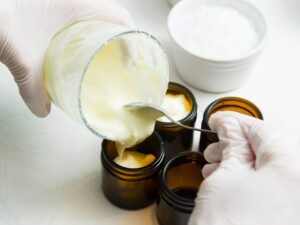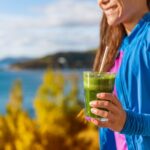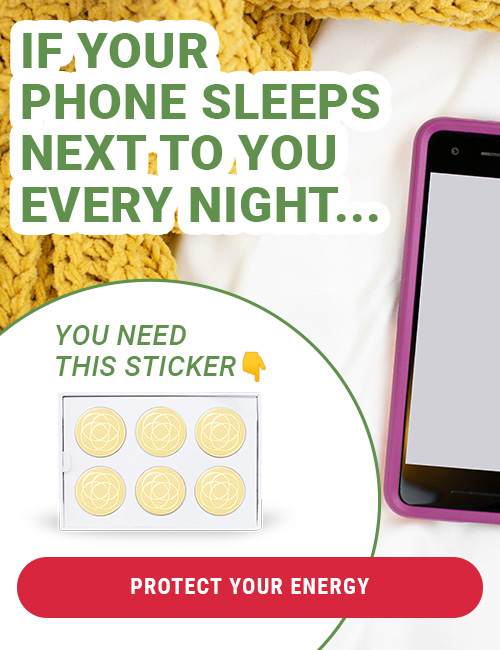The Easy Guide to Choosing A Safe, Non-Toxic Sunscreen

Nobody knows more about sunscreen than Katie Kimball! She’s a natural living mommy blogger, who has personally tested over 100 natural mineral sunscreens since 2010. It all started because she wanted to figure out what products were best for her kids.
She knows exactly what the best reef-safe sunscreen options are, and I asked her to help our audience be able to identify safe, non-toxic sunscreen brands for both humans and the oceans this summer.
— Introduction from Robyn Openshaw
When it comes to reading labels, it can feel like you need a degree in nutrition or toxicology, at times. It's mind-boggling to remember what ingredients to avoid, and is it really enough to just skip anything you can't pronounce?
Luckily, finding a natural, safe sunscreen is seriously not that complicated.
Where many “ultimate guides” have dozens or even a hundred steps, this one is much more doable. In fact, even if you stop reading after point number one, you’re still 95% safer than the rest of the people out there!
In this article:
- Non-Toxic Sunscreen: the One Safe Active Ingredient to Look for in Sunscreen
- What About DIY Sunscreen?
- More Than Skin Deep: Evaluating the Rest of the Ingredients in Sunscreen
- Adding a Layer: the Best Zinc Oxide
- Sunscreen Label Words That Mean Nothing
Non-Toxic Sunscreen: the One Safe Active Ingredient to Look for in Sunscreen
If you're trying to keep your family safe from endocrine disruptors and carcinogenic substances and care for the coral reefs at the same time, flip your tube of sunscreen over and find the active ingredients.
On a drug facts box, active ingredients are listed separately from the other ingredients, so they're very easy to find.
And you only have to remember one thing!
Look for zinc oxide. By itself. That's it!
Zinc oxide is the only active ingredient you need to be fully broad-spectrum, protected from sunburn, skin cancer, and the aging effects of the sun the moment you apply, and with no known harmful side effects.
Some brands are now blending zinc oxide with other chemical active ingredients so that they can slap “mineral-based” on the front of their product, but don't be fooled. More ingredients does not make anything better.
If you find a mineral sunscreen that also includes titanium dioxide, that's acceptable for reef safety, but not quite as bulletproof for health and human safety.
Titanium dioxide, being a heavy metal, has a few questionable aspects of its own, although I would put it above any other chemical sunscreen ingredient all day long.
Why Are Mineral and Chemical Sunscreens So Different?
Minerals sit on the surface of the skin, while chemical active ingredients were proven (again) in a January 2020 study to be absorbed into the bloodstream. Of note, concentrations were above a recommended safe level after just one application of chemical sunscreen.
Chemical sunscreens are showing up in more and more studies as harmful: to the coral reefs, to unborn babies, pervasive in the environmental water supply and difficult to remove. This is a serious problem for the whole world, even if you don’t live near an ocean directly.
Bonus tip: No drug facts box? That means your sunscreen has not gone through the rigorous testing to make sure it actually lives up to its SPF claims.
What About DIY Sunscreen?

I'm all about DIY for dinner and many personal products, but when it comes to sunscreen, this may not be one you want to risk because no testing could mean that the zinc oxide doesn't stay consistently emulsified throughout the tube, or that it doesn't protect as well as it claims in any case. My kids' skin is worth keeping a high standard in my opinion.
For most people, especially those who are just switching over from conventional chemical sunscreen, this zinc oxide only rule is the only one they even need to know. They can stop here... But I trust that you want to be more savvy, more safe, and go a little deeper in your quest for a non-toxic sunscreen.
More Than Skin Deep: Evaluating the Rest of the Ingredients in Sunscreen
The active ingredients are by far the most important, the ones most often implicated in killing over half of the coral reefs on Earth, and often where you'll find endocrine disruptors, but there’s no monopoly on health hazards.
When you find the other ingredients on your sunscreen tube, there are a few guidelines you need to follow to keep the excruciatingly high standards that I generally set.
I figure if I can find a sunscreen that's literally safe enough to eat if I'm stranded on a desert island, why bother with another brand that has 25 ingredients that I might need to look up on EWG’s Skin Deep database?
Here are a few red flags that would cause me to set down a tube of sunscreen immediately and move on:
Parabens
Parabens are a class of chemicals used as a preservative. You’ll often see them toward the end of the ingredients list, and any longer word that ends in “paraben” is included in this category. Examples include methylparaben, propylparaben, and more.
They’ve been linked to breast cancer, may be estrogen-mimicking, are likely hard on the thyroid, and are persistent in the environment (which means that what other people use and wash off their bodies may be going into your body).
Babies are exposed to parabens in utero and via breast milk, and 93% of Americans have parabens in their urine. They’re also harmful to coral reefs, even in small amounts.
Read more on the dangers of parabens here.
Fragrance
Because “fragrance” is an unregulated term, brands can hide over 3,000 chemicals, including parabens and phthalates, by listing this useless word on a product’s ingredients.
More than anything, when I see the word “fragrance” on a label, it’s a red flag to me that the brand may not be fully disclosing ingredients, and I prefer 100% transparency. There could be allergens or toxins hidden in there.
Check out this interview with toxins expert Lara Adler for more on “fragrance” and why to avoid it.
In general, I prefer to look for nourishing oils with names I truly can pronounce, and it's always a bonus to find antioxidants included. Any exposure to the sun is going to generate some free radicals, so it's prudent to slather on antioxidant action before heading out to catch some rays.
Healthy antioxidants for the skin include:
- Green tea,
- Seabuckthorn oil,
- Vitamin E,
- Cocoa butter,
- Mango butter,
- Raspberry seed oil,
- Cranberry seed oil,
- Carrot oil,
- Sunflower oil,
- And more.
Bonus tip: red raspberry seed and coconut oils carry an SPF value of their own!
Adding a Layer: the Best Zinc Oxide
It really is almost always good enough to simply look for a zinc oxide as the only active ingredient.
However, if you want to take it to the next level, there are a few additional nuances to understand.
Most experts recommend at least an SPF of 30 for proper protection. In my experience, any percentage of zinc oxide less than 18% is just not going to provide the coverage, so it's a red flag if I see zinc at 12% for example.
And then we need to talk about nanoparticles.
Nanoparticles describe the size of each tiny speck of zinc oxide, which is a white powder naturally found in the Earth. The tinier that zinc oxide is ground, the more transparent your sunscreen might be which sounds like a really good thing when you imagine the lifeguard nose pictures from the 1980s.
As with most attempts at beauty, the industry can go too far, however.
Once the particle size is below 100 nanometers, the zinc oxide is officially a nanoparticle and carries some inherent risk.
The reason zinc oxide is a safe option for your time in the sun is that it sits on the surface of your skin and isn't absorbed by the bloodstream.
Although this is debated, nanoparticles may be small enough to go deeper than the superficial level, and that opens up a Pandora's box of, “we don't know what we don't know" which means I will cautiously avoid them for now.
What some research is showing to be sure is that nanoparticles of zinc oxide have a negative effect on the environment, including marine life, soil organisms, and plants, which trickle up to have a possible toxic impact on humans as well. (Sources: 1, 2, 3, 4)
Luckily, brands have gotten very good at making their formulations much more transparent without requiring nanoparticles, and you can even find tinted zinc oxide sunscreens that are great for the face. I wear them as a base foundation layer for makeup.
Any brand that specifies that they don't use nanoparticles is also a great sign that the company takes care with its ingredient quality in general.
Bonus tip: stay away from spray formulations of zinc oxide sunscreen, especially those that attempt to mimic the conventional continuous spray applications.
[Related: 3 reasons never to use spray sunscreen.]
Although zinc oxide is not harmful on the surface of the skin, it can be quite harmful when inhaled, so airborne particles are a big risk. That's another reason I don't recommend DIY, because you're handling the powder itself and really need to know a lot of safety precautions.

Sunscreen Label Words That Mean Nothing
We have to finish our tutorial with some greenwashing phrases to avoid.
Although sunscreen is regulated by the FDA to a certain extent, like in the grocery store, there are plenty of words and phrases that aren't regulated and therefore have no definitive meaning to the consumer and are best avoided.
1. Sunblock: in 2011, the FDA actually banned the use of the word sunblock because no active ingredients can completely block 100% of the rays of the sun. If you see “sunblock,” that company is not paying attention!
2. Waterproof: similarly, the FDA requires the use of the phrase water-resistant instead of waterproof, because again nothing can be proven to stay on while swimming 100% of the time. There are strict FDA tests even for the use of the phrase water-resistant, and brands are allowed to claim 40 minutes or 80 minutes depending on how their formula performed.
3. Natural: just as in food, the word “natural” is unregulated, so you need to be savvy enough to mistrust the front of the bottle with that one.
4. Mineral-based: too many big brands are including just a small percentage of zinc oxide scattered among their conventional chemical ingredients just so that they can put the word “mineral” on the front of the bottle. Don't be tricked! Look for zinc oxide (and only zinc oxide!) in the active ingredients.
5. Reef-friendly: in 2021, legislation will go into effect in Hawaii banning two chemical ingredients, oxybenzone and octinoxate. This is great news for the reefs and human health and safety, but it just became bad news for label readers. It used to be that seeing “reef safe” on a sunscreen was a beacon of hope that you almost certainly just discovered a zinc oxide only brand of sunscreen. Now the big brands are starting to remove just the two banned ingredients but still use a cocktail of other chemicals, most of which are not reef safe either, just not included in legislation yet. Sadly, labeling acting like it's protecting the reefs now has no meaning whatsoever.
The bottom line? Always check your sunscreens’ active ingredients and look for zinc oxide, and zinc oxide only.
Even if you stop there, you are doing better for your family and our precious marine environment than 95% of the rest of the world.
The next step of course is to make sure you find a brand that goes on smoothly, works effectively, and doesn't make you look like an alabaster statue because it's so white!
That's where my family and I come in, having A/B tested well over 100 brands every time we go to the beach.
I begin with rigorous standards for ingredient safety and quality, and our personal testing will let you know how clear the formula is, how easy it is to apply (some go on like white-out drying, no good!), if we burned vs. other brands, and even how well they hold up over winter without separating.
Find the most updated natural mineral sunscreen reviews here, including an opportunity to download a cheat sheet to help you remember how to evaluate your own labels if you happen to find a brand that I haven't yet gotten my hands on.
Read next: 5 Effective Natural Sunburn Treatments

Katie Kimball, the national voice of healthy kids cooking, has been a blogger since 2009 at Kitchen Stewardship, helping families stay healthy without going crazy. As part of her natural living quest, she and her 4 kids and pale-skinned husband have personally tested over 100 different sunscreens, and she's built a reputation as "the Wikipedia of sunscreen" and an honest source of reviews in the natural living world.
When they're not A/B testing sunscreens, her kids are learning to cook and changing the health of their generation at the Kids Cook Real Food eCourse.

Disclosure: This post may contain affiliate links that help support the GSG mission without costing you extra. I recommend only companies and products that I use myself.
Posted in: Eco Friendly Living, Lifestyle, Natural Products, Uncategorized















Do you have a specific brand or 2 you can suggest?
I have same question As Kori- suggestions on brands??
Hi i also have the same questions, can you give us a couple of brands that she’s using?
The two that I really like are Supergoop Mineral Matte is a good one For oily skin as well as the new Biossance Squalene and Zinc Mineral SPF for those who are combo-dry skin types and work well under makeup. These both contain 17% zinc. Also check out The Sunscreen Company. They have the highest percent of zinc on the market which is 25%. They are based in Canada so you can only order online. For more options check out the EWG.com and they have a TON of great suggestions for safe sunscreens with product ratings and everything.
Hello Kori, you can find Katie Kimball’s top sunscreen brand recommendations here: https://bit.ly/31MmCtE Thank you for reading!
I wish you could name brands here it would really help I have been using coola
Is that a good one?
Hi Diana, thanks for reaching out. If you’re looking for brand names, this resource should help:
https://sl290.isrefer.com/go/sunscreen/robynop
—Lindsay,GreenSmoothieGirl